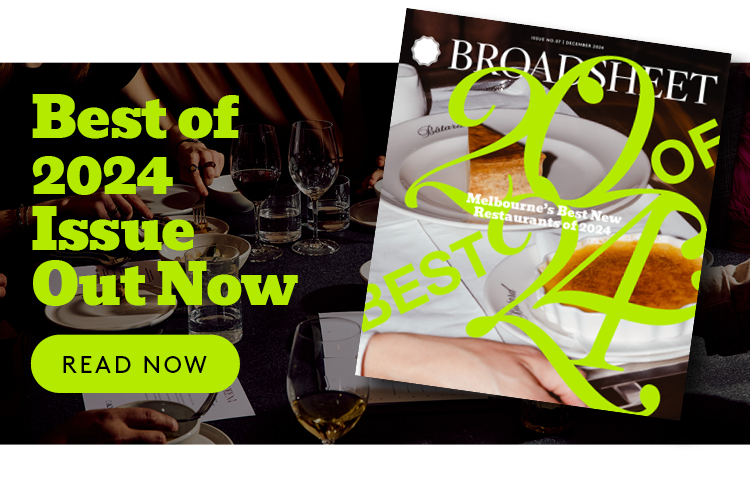Clare Press dreams of a future where we don’t have to categorise items as sustainable or unsustainable – the only option is the best choice for all involved. A self-proclaimed “sustainability communicator”, Press is the former sustainability editor at Vogue Australia, an author, the host of fashion podcast Wardrobe Crisis and a frequent panellist and speaker.
In her latest book, Wear Next, Press outlines 16 scenarios for the future of the fashion industry. She acknowledges that it can feel overwhelming and a little bit doom and gloom when you dive deeply into the issues that surround fashion. And while there is a long way to go – and a lot of aspects to consider – she aims to offer a hope-filled perspective for navigating what comes next.
If you’ve found yourself in a “new year, new wardrobe” state of mind but you’re also focused on making better choices, Press says buy the new dress – but make sure it’s one you really love and see a place for in your wardrobe for years to come.
What impact does greenwashing have on the industry?
Greenwashing is a massive problem. It erodes trust when [consumers] feel like they’re being lied to or that brands are manipulating them by presenting a vision that is different than what’s going on. But it’s created this nervousness for anyone who talks about the topic and uses words like “green”, “eco” or “sustainable”. The problem is that they’re not specific – those words can mean different things to different people. There’s no agreed definition, and we’re not yet at a place where the law regulates the use of these words.
What are your preferred words or phrases when it comes to talking about sustainability at the moment?
I still use the term “sustainable fashion” because I think it’s a useful umbrella term that’s broadly understood to mean trying to do better by people and the planet. I also use the term “ethical fashion”, which, for me, is more about human rights and social justice, like treating workers fairly. I think the best way to talk about sustainable fashion is to make it really relatable and personal.
But if I imagine a fashion future that I would feel really proud of being part of, it would be one where we didn’t need these labels because we’ve gotten to a place where you could presume and rely on the products that we’re being offered to have been produced responsibly.
Your book goes beyond tips and tricks for making more sustainable choices. Why was presenting a futurist perspective important?
I felt like there was a lack of hope and a lot of overwhelming information out there. Yes, the most sustainable item is the one you already own. And if you want to be really extreme, the most sustainable lifestyle is one where you don’t consume anything. But that’s not realistic.
For years on Wardrobe Crisis, I’ve been speaking to people who are really making a difference on a day-to-day basis. I wanted to paint a really enticing picture of a gorgeous, hopeful fashion future – which is why I came to fashion magazines in the first place. I love the glamour and fantasy. And I think if we don’t offer a version of that when it comes to sustainable choices, we’re not going to bring people along on the journey.
Some of the solutions for a better future feel simple and reclaimed from the past, and others seem straight out of science fiction. Where is the balance?
It’s interesting when you think about the future versus going back to some kind of a delicate past. There were a lot of [industry] conversations during the pandemic around slowing down, producing fewer seasons and rolling back our obsession with sales cycles. It was a crunch point where people saw just how unsustainable the system had become. And it gave us a taste of what it was like to not feel pressured to always be “on”.
People want to keep moving forward – it’s human instinct. But there are ways to do it while being reasonable and responsible. I think returning to seasonality with clothes, in the same way that we have with food, as well as reviving mending skills and really connecting with the people who make our stuff is just as important as advancing technologies for recycled or regenerative materials.
What does a sustainable wardrobe look like to you in 2024?
If your New Year’s intention is to be more sustainable with your fashion choices, start by doing a wardrobe audit to figure out what you’ve got. Be realistic about what you actually wear and then decide to repair or alter items you love, and sell or donate things that no longer work. Then you can see what you’re missing and buy these pieces from an empowered place. I don’t think there’s any point making people feel guilty – I love clothes, and I definitely still buy clothes and get a thrill from it. But try and make it make sense when you add new items to your wardrobe. I think it’s about being connected, aware and considered with what we buy and choose to bring into our lives.
We hope you like the products we recommend on Broadsheet. Our editors select each one independently. Broadsheet may receive an affiliate commission when you follow some links.








